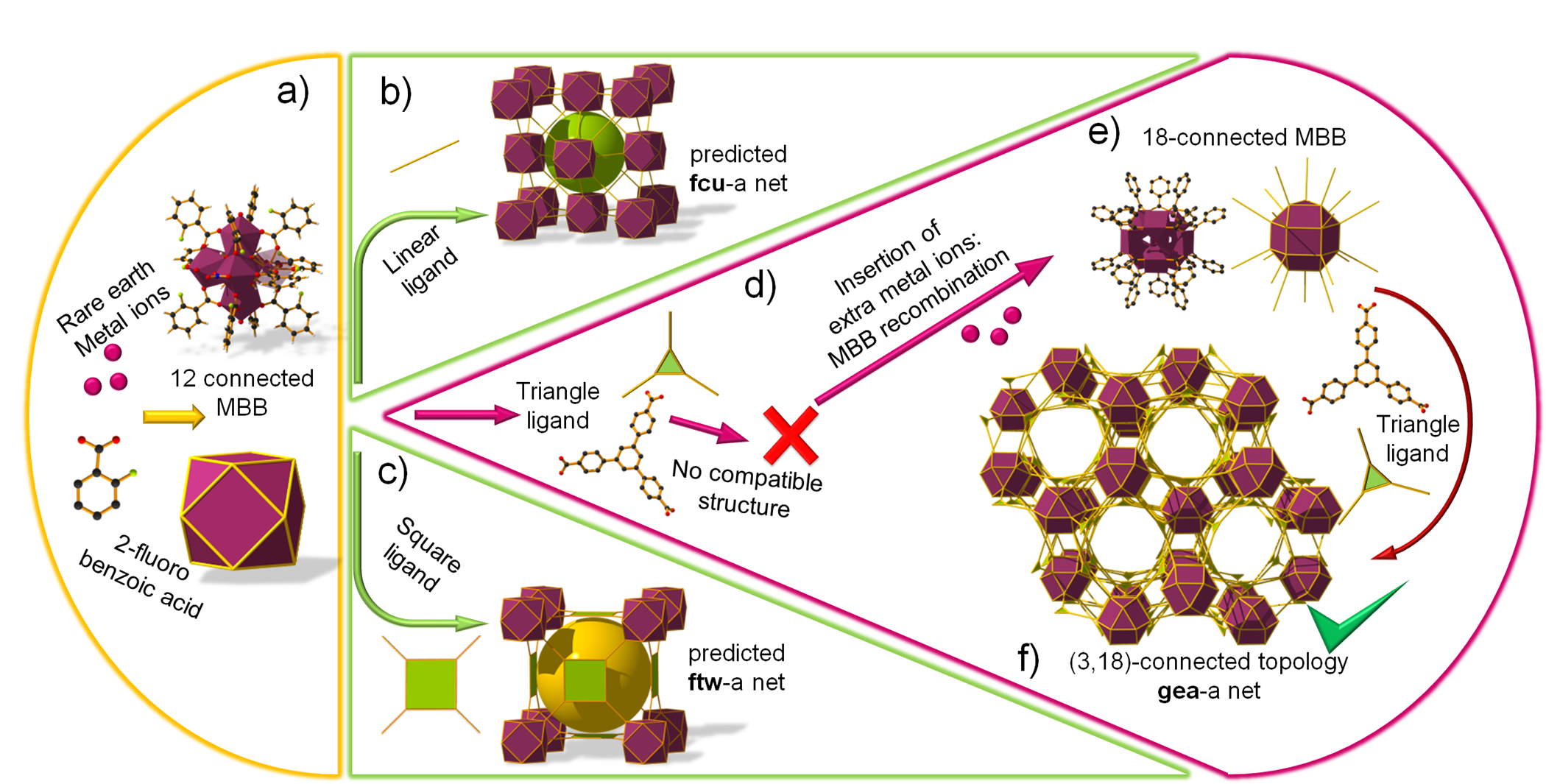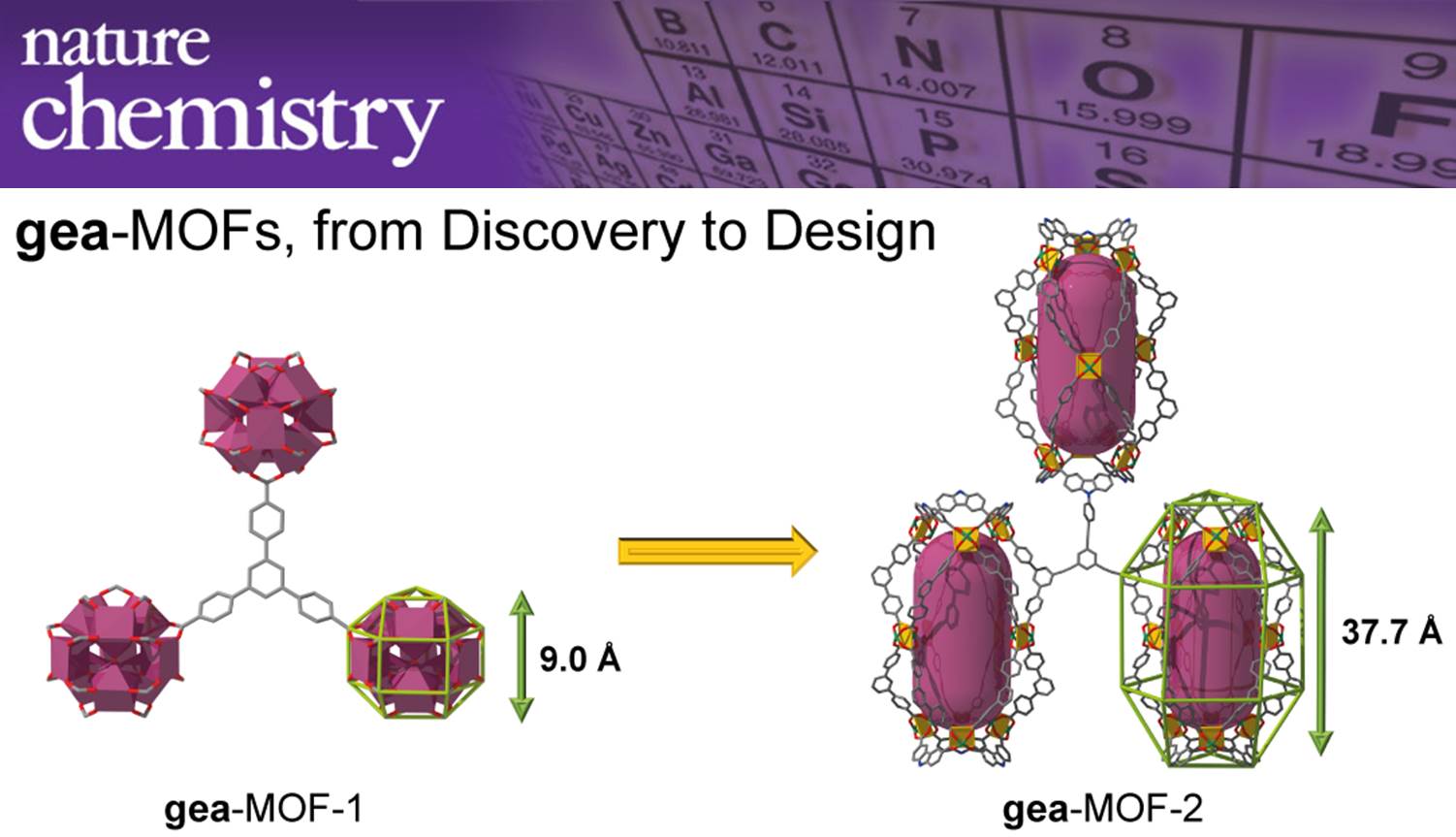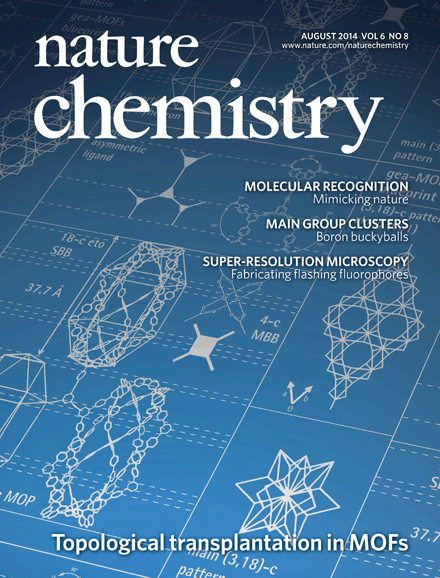

29 June, 2014
Congratulation to Vincent, Łukasz, Youssef, Amy, Valerio, Łukasz, Karim and Prof. Eddaoudi for the publication of their cutting edge work about MOF design in Nature Chemistry.
Following their breakthrough results recently published in J. Am. Chem. Soc. about the synthesis of various fcu-MOFs , based on rare earths (RE) inorganic clusters, scientists from the FMD3 research group explored the combination of a triangular ligand and RE, in the presence of fluorinated modulator, and isolated a new highly connected RE nonanuclear cluster. This cluster is surrounded by eighteen 3-connected ligands to form MOF with a highly connected (3,18)-c net, gea topology (gea: guillerm, eddaoudi, net a ). This gea -MOF -1 is highly porous, thermally stable, catalytically active for the synthesis of cyclic carbonates, and shows great promises for the separation of hydrocarbons.

The unique expertise of the FMD3 group in topological analysis and MOF design was very helpful to recognize that the gea net, qualified by Prof. Mike O'Keeffe as an "exceptionally interesting net", can be utilized as a blueprint for the rational design of gigantic MOFs, utilizing the Supermolecular Building Blocks (SBB) approach to replace the inorganic 18-c cluster by an open metal-organic polyhedron (MOP).

Indeed, such a MOP has already been described as discrete entity, and results from the assembly of two types of bent ligands (6x90o and 120o angles) and 4-connected Cu paddle wheels. Interestingly, the unveilment of the gea net now provides the required information to link them together in a MOF for the first time. By the careful geometrical analysis, the FMD3 team designed and synthesized an asymmetric hexacarboxylic ligand containing the appropriate angles (1x90 o and 2x120o). As expected, its combination with cupper paddle wheels resulted in the formation of gea-MOF-2, the first SBB based MOF with the same general gea topology.
Unambiguously, this report shows that MOF design finally became true!
